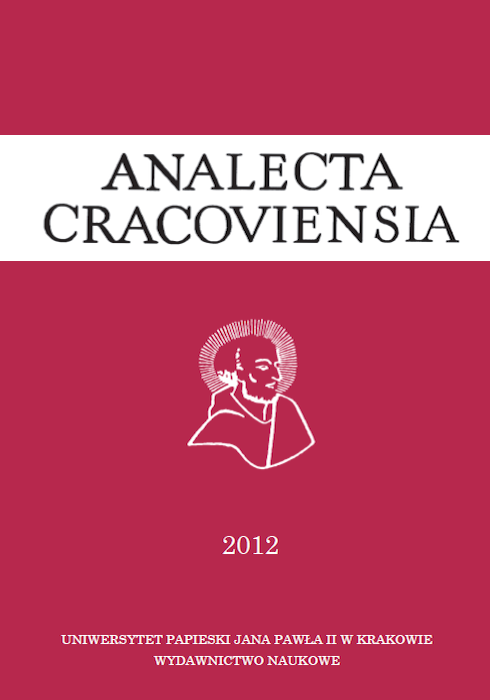Średniowieczna retoryka jako czynnik kształtujący sztuki plastyczne. Przegląd podstawowych problemów
Medieval rhetoric as a factor affecting the visual arts. An overview
Author(s): Dariusz TaborSubject(s): Visual Arts, Middle Ages, Biblical studies, Rhetoric
Published by: Wydawnictwo Naukowe Uniwersytetu Papieskiego Jana Pawła II w Krakowie
Keywords: Middle Ages; rhetoric; visual arts;
Summary/Abstract: In the Middle Age the rhetoric was one of the seven liberal arts. Its position in the medieval culture Has been confirmed by Cassiodor, Isidor of Sevilla, Augustin of Hippona and Martianus Capella. The medieval rhetoric was composed of five parts: inventio (invention), dispositio (disposition), elucutio (elocution), memoria (memory) and pronuntiatio (pronuntiation). Only three of them exertet real influence on the fine arts. Inventio controlled the process of choice of the ideas, which have benn represented by images in work of arts. Dispositio collocated the images in the whole structure of work of art. Elocutio applicated some rhetorical figure in order to communicate some massages throughout the images. In the Middle Ages existed two sources, which inspired the medieval rhetoric. The first Skurce was the ancient, Greek and roman rhetoric, the second – the semitic, biblical rhetoric. In the Bible exist two important literary and rhetorical structures – the parallelism and the centripetal construction. These structures influenced some models of composition of narrative cycles and series of images. Rhetor – a hypothetical personage, educated in trivium and quatrivium and expert in the rhetoric, played important role in the medieval culture. He collaborated with artist and he applicated the rhetorical methods and rhetorical figure in the creation of works of art.
Journal: Analecta Cracoviensia. Czasopismo Uniwersytetu Papieskiego Jana Pawła II w Krakowie
- Issue Year: 2012
- Issue No: 44
- Page Range: 257-271
- Page Count: 15
- Language: Polish

